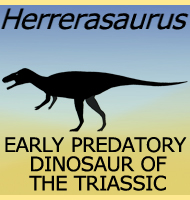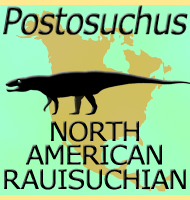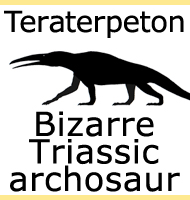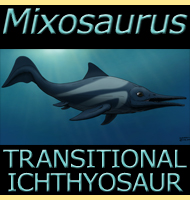


Kwanasaurus
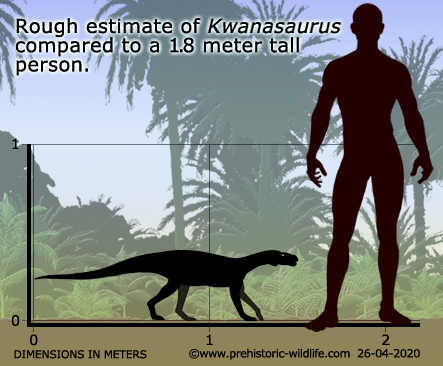
Name:
Kwanasaurus
(Kwana lizard/alt. eagle lizard).
Phonetic: Kwa-nah-sor-us.
Named By: J. W. Martz & B. J.
Small - 2019.
Classification: Chordata, Reptilia,
Dinosauriformes, Dracohors, Silesauridae, Sulcimentisauria.
Species: K. williamparkeri
(type).
Diet: Herbivore.
Size: Uncertain due to lack of remains, but
comparison to other silesaurids suggests larger individuals possibly
around 1.5 meters long.
Known locations: USA, Colorado - Chinle
Formation.
Time period: Norian of the Triassic.
Fossil representation: Partial remains of several
individuals, including partial skull and jaw bones, teeth, and
fore and hind limb bones.
Classed
as a silesaurid (relative of Silesaurus),
Kwanasaurus is a
herbivorous dinosauromorph that lived in North America during the late
Triassic. Dinosauromorphs include the ancestors of the dinosaurs,
but the appearance of Kwanasaurus in the late
Triassic when true
dinosaurs were already roaming around suggests that Kwanasaurus,
and
other silesaurids were evolutionary off shoots from this base group.
Kwanasaurus is one of the northern most known
silesaurids.
Kwanasaurus
is known for having a skull that at the time of its description is
deeper and more robust (strongly formed) than other silesaurids.
Some of the teeth in the jaw were rounded but most are more
leaf-shaped and strongly attached to the tooth bearing bones. These
features all point to Kwanasaurus being well
adapted for eating the
tougher plants of the Triassic, that were possibly too much for
lighter built plant eaters to deal with.
Kwanasaurus
is based upon the Ute word ‘kwana’ which means ‘eagle’. This
is in reference to the town of Eagle in Colorado which is close by to
where the fossils of Kwanasaurus were found.
Further reading
- Non-dinosaurian dinosauromorphs from the Chinle Formation (Upper
Triassic) of the Eagle Basin, northern Colorado: Dromomeron
romeri (Lagerpetidae) and a new taxon, Kwanasaurus
williamparkeri (Silesauridae). - PeerJ
7:e7551:1-71. -
J. W. Martz & B. J. Small - 2019.
----------------------------------------------------------------------------
Random favourites
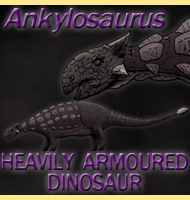 |
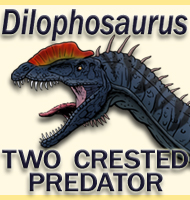 |
 |
 |
